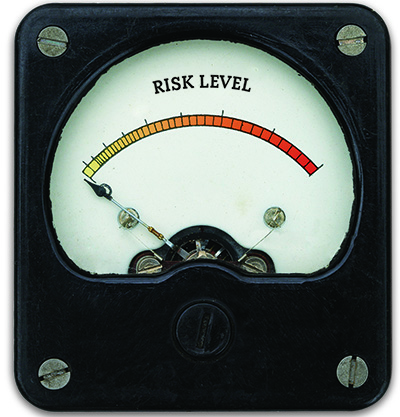
 Q I’m about to start investing a sizeable chunk of money in a portfolio of different stocks, bonds, and ETFs. How important is understanding my risk tolerance in choosing the right investments? — Francis
Q I’m about to start investing a sizeable chunk of money in a portfolio of different stocks, bonds, and ETFs. How important is understanding my risk tolerance in choosing the right investments? — Francis
A Knowing your risk tolerance along with what is suitable for you has always been very important in all aspects of our lives. From how we dress, to the activities we participate in, and ultimately, to how we invest. Bankers are known for their dark suits and red ties to convey power. Skateboarders in the same attire would be entertaining, to say the least along with making their stunts much more difficult and dangerous to execute in their wing tip oxfords. So it’s easy to see in everyday life how if we get suitability wrong, we can bring in unnecessary risk.
Sign up for our Investing newsletter »
When we think about suitability in what we buy for investments it can be far more challenging than for the bankers figuring out why his baggy shorts won’t fly at the next meeting. A prospectus and offering memorandum are built for lawyers, not laymen. Which is likely why they are so fun to read.
Getting your suitability wrong can work for you or against you. Whether you are working with an adviser, or on your own, it will be subjective to what you or the adviser’s knowledge is across multiple investment types and strategies. You can’t try it on and get your partner to give you an opinion or check yourself out in the mirror.
Setting your risk tolerance
Yet, getting it right is not that complicated. Your first step is knowing what you want or need to accomplish with your investments. If you are using an adviser they should have a way of showing you what would be suitable for you. Be aware, not all tools are created equal in educating or profiling you. I’ve written a blog explaining the pros and cons of risk tolerance questionnaires that are designed to identify your risk tolerances which in turn determine what would be suitable for an investor. (This link will take you to it if you’re interested.)
The risk of getting suitability wrong is that it will alter the outcome of your investment strategy. If your risk profile determines very conservative investments are most suitable for you, and for your investment strategy to work out the way you would actually like it to, you may never be able to invest in the types of securities that could provide the growth you need. Alternatively, if you are too aggressive in your risk profile, you may end up owning investments that fluctuate far more in price than you want or need to accomplish your goals.
Still, this is not a complex dilemma if approached correctly. To start, determine what you want out of life. Higher education, build to build a retirement nest egg, travel the world. What are your life goals? Once you know the answer to these questions, then work on how to get there. A back of a napkin may be all you need to do this, but there are also a ton of great calculators online if you prefer to do it yourself. Alternatively, a formal financial plan created by a professional might be what you need.
At the end of the day, most of us still need education on the pros and cons of different types of investment strategies. I’ve written a blog that speaks to what you need to understand if you would like similar results as great investors like Warren Buffett have generated. Happy hunting.
Miles Clyne is a portfolio manager with Tycuda Group
More stories like this:

 Q I’m about to start investing a sizeable chunk of money in a portfolio of different stocks, bonds, and ETFs. How important is understanding my risk tolerance in choosing the right investments? — Francis
Q I’m about to start investing a sizeable chunk of money in a portfolio of different stocks, bonds, and ETFs. How important is understanding my risk tolerance in choosing the right investments? — Francis